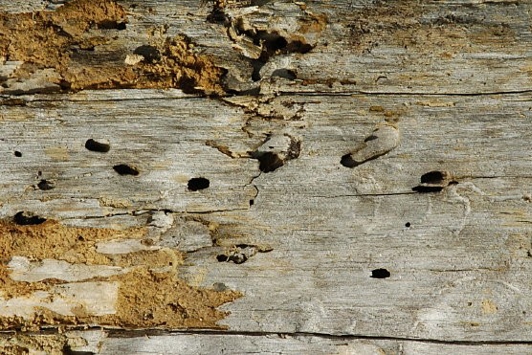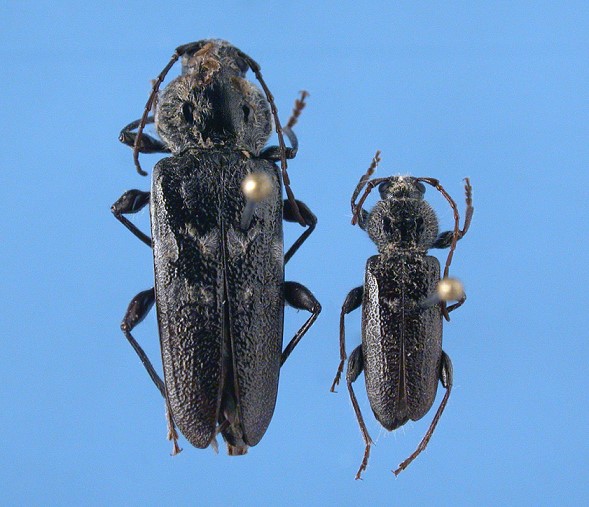
Stop the spread of European house borer
Help us stop the spread of European house borer during flight season, from September to April, by learning to spot the signs of infestation on your property and reporting suspected cases to the department.
About the European house borer
Signs in host trees and wood
- Oval shaped exit holes are 3 to 10 mm in length and run with the grain of the wood.
- Frass, a mixture of powdery wood dust and excrement, can be found below exit holes.
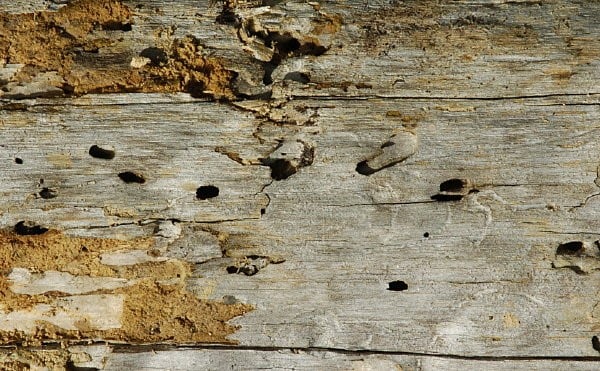
Signs of damage in structural timber
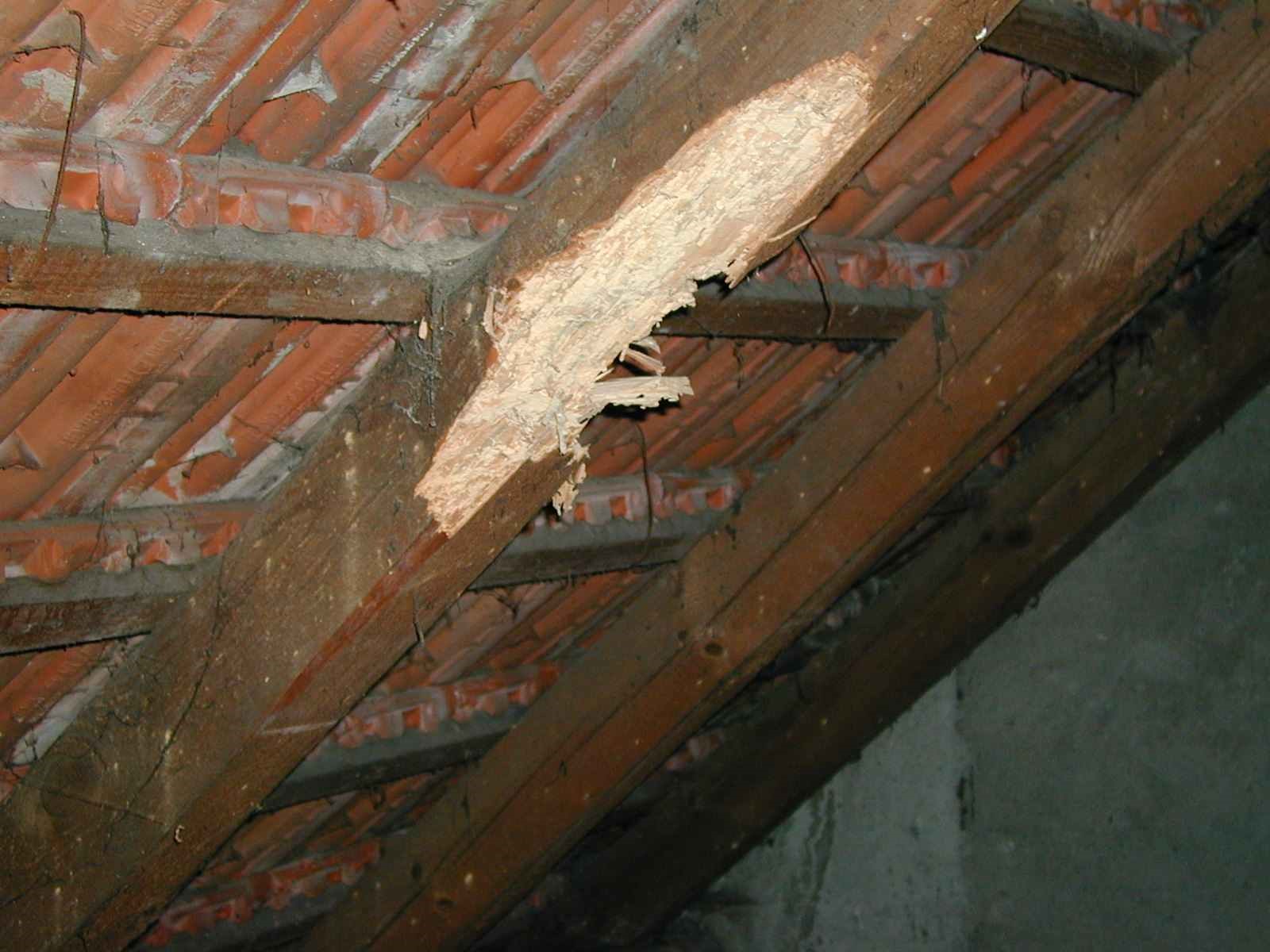
European house borer beetles
- Coloured brown-black to grey-black, with distinctive white patches on their wings.
- About 8 to 25 mm in length, with antennae half as long as their body.
- Two raised black shiny knobs behind their head.

Larvae (caterpillars)
- Larvae are cream-white coloured, with a rippled body and enlarged head.
- Up to 40 mm in length.
- Boring larvae make a soft scraping noise under the surface of the wood.
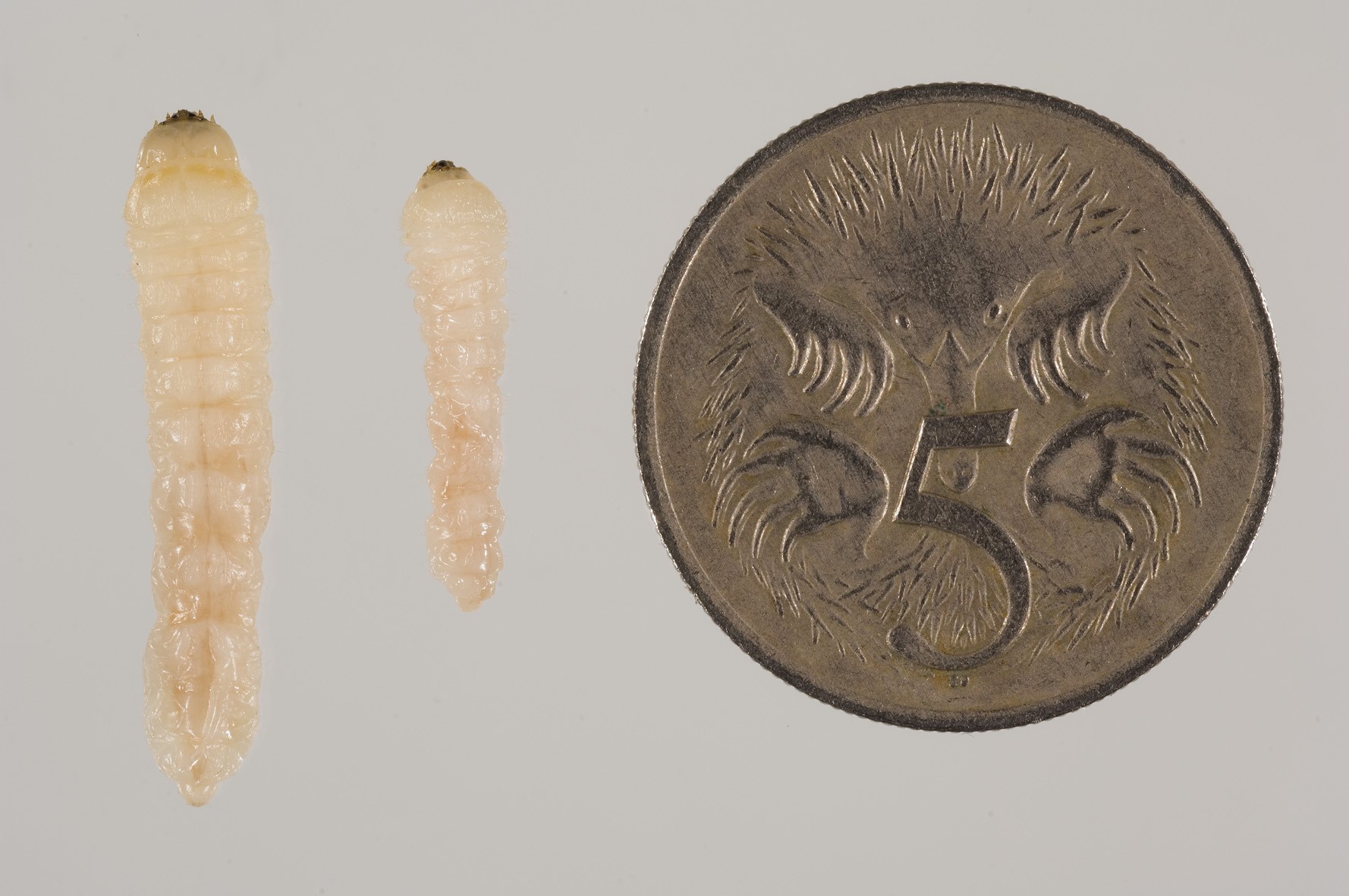
Where to look
Some areas of metropolitan Perth and regional areas of WA are known to have EHB. can check the map to see if you live in or near an area with EHB.
Look for EHB activity:
- around dead and living pine trees, logs, or debris. The 2 most common pine tree species in Perth (Pinus pinaster and Pinus radiata) are susceptible to EHB. A full list of other tree species susceptible to EHB is provided below.
- on and around pine firewood, and any pine timber lying in the yard
- on and around any other articles made of pine wood, such as roof timbers, door and wall frames, flooring, architraves, furniture, pallets, crates, boxes, and dunnage.
Suitably accredited pest control operators may check pine roofing timber.
When to look
- EHB beetles emerge from the beginning of September to April the following year.
To minimise the spread of EHB in WA, there are restrictions on the movement of pinewood in areas that EHB occurs. The restrictions are described in the Agriculture and Related Resources Protection (European House Borer) Regulations 2006, which play an important role in reducing EHB spread and infestation to protect WA homes.
Industry, homeowners and government organisations must adhere to the regulations, or face a penalty of up to $2000.
Other regulations applicable to RMZ areas and minimising infestation are the Building Commission Advisory notes 2009/002 and 2009/004, which mandate the use of EHB non-susceptible materials in RMZs areas, such as treated pinewood.
-
European house borer regulations
Department research has shown EHB larvae can live inside a piece of timber in Western Australian conditions for 2 to 5 years. Early discovery of EHB can provide homeowners with the opportunity to control the pest before serious damage occurs. If EHB is not found early, 2 or 3 generations may re-infest the same piece of timber, causing significant structural damage.
Prevention
- When building, use treated pine (hazard level H2 or higher) or other non-susceptible materials.
- Ensure homes built with untreated pinewood are inspected by an accredited pest controller with EHB training.
Storage
- Store pinewood in a secure building or fully enclosed in plastic wrapping.
Movement
- Be vigilant when moving and handling pinewood.
- Do not remove pinewood from plantations and parkland areas.
- Do not collect pinewood placed on verges for local government collection.
Disposal
- Dispose chip pinewood waste, ensuring it is smaller than 100 cm3.
- Burn felled pine trees, dead parts of trees, and waste timber articles under local government burn permits.
- Keep live pine trees free of dead wood and dispose of dead wood appropriately. Call our Pest and Disease Information Service (PaDIS) on 8 9368 3080 to be directed to a biosecurity officer to discuss a suitable measure for your property.
Restricted Movement Zones
Check out our interactive map to see if you live within a European house borer restricted movement zone. To see if a location falls within an Registered Movement Zone, type the address in the search function area (click the magnifying glass).
Note
- Maps of Restricted Movement Zones (RMZ) are current and are subject to change. Please check back regularly.
- The maps are revised when new European House Borer (EHB) finds result in an expansion of current RMZ boundaries.
- For a full description of RMZ road boundaries, see RMZ border descriptions.
-
European house borer Restricted Movement Zones border descriptionspdf (436 KB)
Documents
-
How to report suspected European house borerpdf (434 KB)
-
European house borer: biosecurity alertpdf (7.42 MB)

